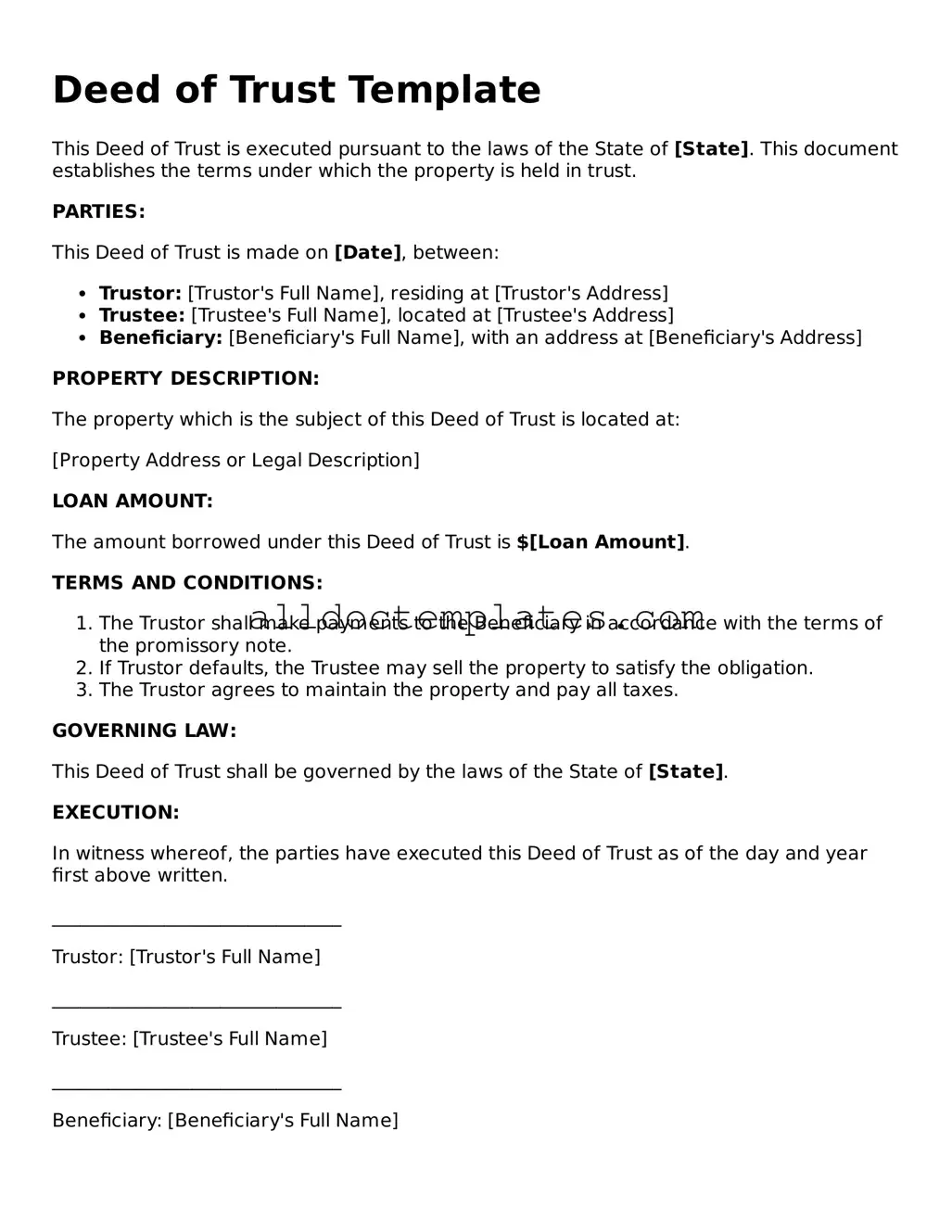Deed of Trust Template
This Deed of Trust is executed pursuant to the laws of the State of [State]. This document establishes the terms under which the property is held in trust.
PARTIES:
This Deed of Trust is made on [Date], between:
- Trustor: [Trustor's Full Name], residing at [Trustor's Address]
- Trustee: [Trustee's Full Name], located at [Trustee's Address]
- Beneficiary: [Beneficiary's Full Name], with an address at [Beneficiary's Address]
PROPERTY DESCRIPTION:
The property which is the subject of this Deed of Trust is located at:
[Property Address or Legal Description]
LOAN AMOUNT:
The amount borrowed under this Deed of Trust is $[Loan Amount].
TERMS AND CONDITIONS:
- The Trustor shall make payments to the Beneficiary in accordance with the terms of the promissory note.
- If Trustor defaults, the Trustee may sell the property to satisfy the obligation.
- The Trustor agrees to maintain the property and pay all taxes.
GOVERNING LAW:
This Deed of Trust shall be governed by the laws of the State of [State].
EXECUTION:
In witness whereof, the parties have executed this Deed of Trust as of the day and year first above written.
_______________________________
Trustor: [Trustor's Full Name]
_______________________________
Trustee: [Trustee's Full Name]
_______________________________
Beneficiary: [Beneficiary's Full Name]
